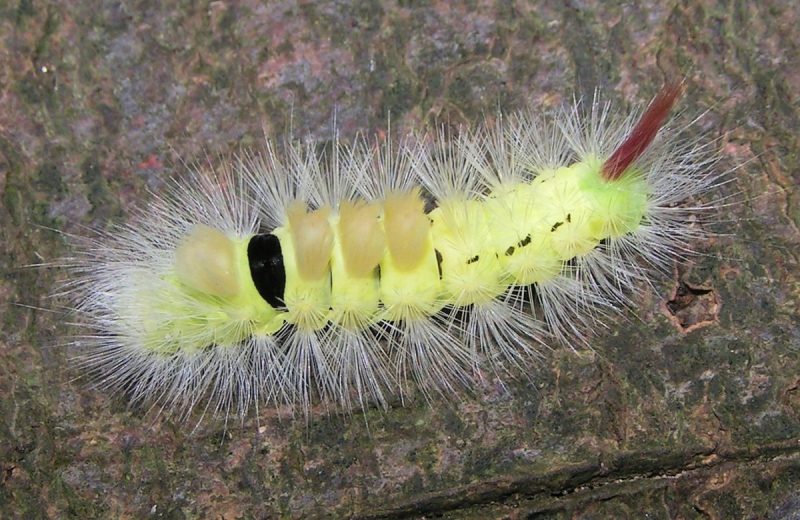You have probably seen them around — those small, spiky caterpillars inching their way around campus. Perhaps you have seen one caught in somebody’s hair, or making its way down a long cascade of silk underneath a tree, or even wriggling around a handrail in Hewlett 200.
Their abundance this year is nothing like that of last year, when the heavy rains in winter quarter provided them with a more-than-ample breeding season. I remember walking between the Oval and Lathrop, looking for a table to work on outside. When I found one, I was about to sit down, but then stopped mid-way to find it covered with cocoons that were the same color of the wood underneath.
And, of course, even last year does not compare with the “plague” of 2006, when, as Stanford Magazine reported: “campus construction may have affected predators’ habitats” that usually keep the caterpillar population in check. Karen Stidd, supervisor of horticultural support for grounds services, estimated that the population that year was in the thousands or ten thousands. “It got so bad she and her colleagues became a kind of caterpillar SWAT team, called in to perform ‘emergency treatments’ at campus events,” states the magazine.
The nearby city of Mountain View, which experienced a hot February that made for an early hatching this year, routinely sprays insecticide to ward them off. “In the most affected areas, staff will be using an insecticide known as Evergreen Pyrethrum Concentrate to bring down caterpillar populations while minimizing the effect on other insects,” writes the Mountain View Voice.
On campus, a remedy to the pervasiveness of the caterpillars in the past has not involved insecticide or other chemical means, but rather the careful spread of a parasitic wasp to keep unintentional damage to other insect populations at a minimum. This wasp “injects its eggs inside caterpillar eggs. When the baby wasps hatch, they eat their way out, consuming the caterpillar larvae,” according to the same article from the Stanford magazine.
Sure, the caterpillars are inconvenient. They can fall on you and nuzzle into your backpack for you to find later. They alarm unsuspecting tourists. They might make prospective freshmen do a double-take. But is the nuisance they cause worth their extermination?
The caterpillars themselves are harmless. At worst, their fuzz can irritate skin if touched, with the potential for a rash; another concern is that when they hatch in large numbers, the moths can eat through foliage at a higher rate than they would have if their population was more contained. Although researchers and groundskeepers should monitor the caterpillars, as well as look into a way to re-introduce the predators whose population might have been disrupted by construction, they should not go as far as getting rid of them en masse each year that their numbers resurge. Their extermination should have reason beyond aesthetic purposes and opening up a few study spots outside — beyond maintaining a brand — especially if the caterpillars are not directly damaging the ecosystem in some way, beyond eating through some extra leaves that are bound to re-grow.
Population monitoring makes sense; population eradication does not.
Contact Amanda Rizkalla at ‘amariz’ at stanford.edu.
